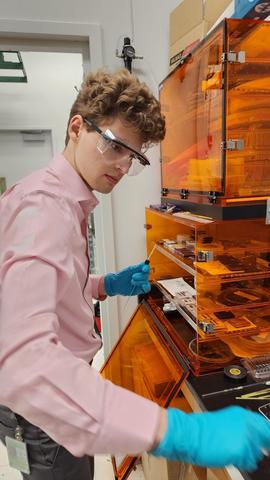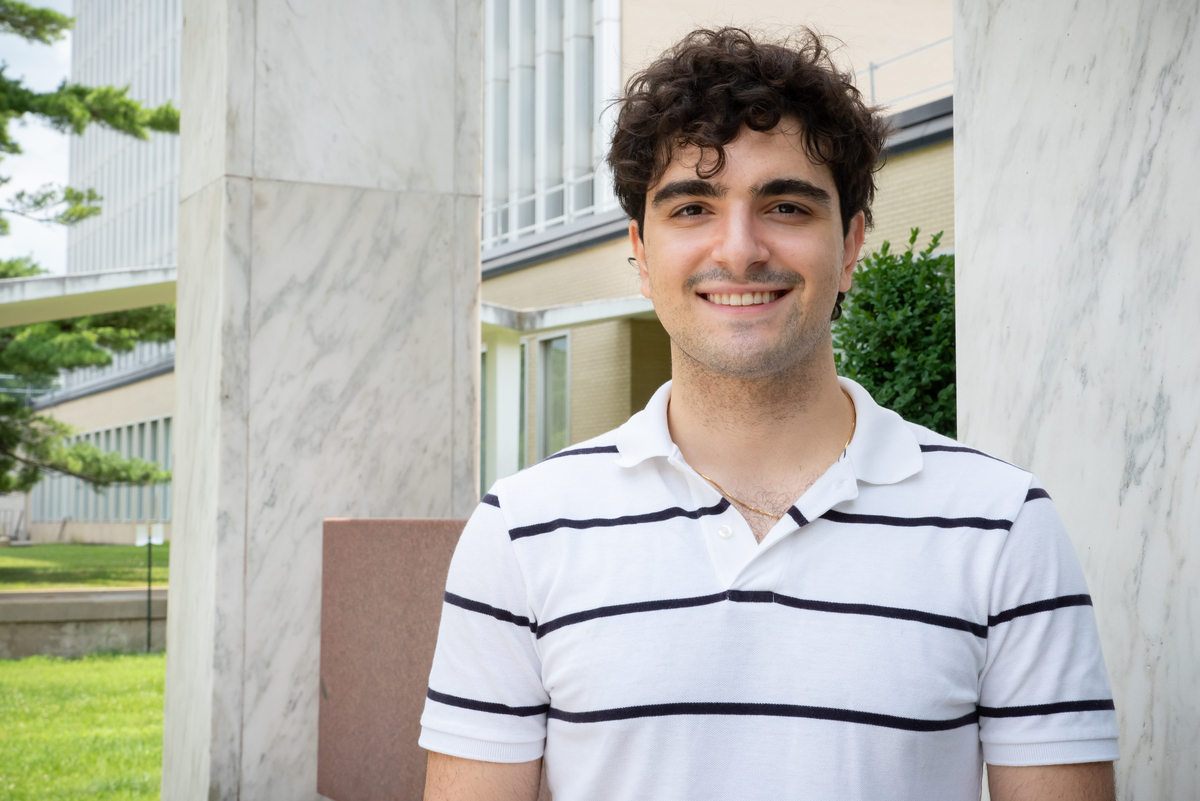Taking Measure
Just a Standard Blog
A Summer of Science: NIST Interns’ Stories of Their Time in the Lab
From measuring UV light to working on virtual reality software, a summer at NIST is not your average internship.
Our Summer Undergraduate Research Fellowship (SURF) program gives our interns a chance to work side by side with NIST’s world-class researchers. Below is a snapshot of what a few of our interns did this year.
Do you or a college student you know want to join us next summer? Check our SURF page this fall for application details for summer 2024 and sign up for our email list!
Making Disinfecting Technology Safe for People, Not Germs

Grace Waters
School: Virginia Military Institute (Recent Graduate)
Hometown: Gainesville, Florida
During my senior year of college, I did a capstone project measuring the light from certain stars. I enjoyed that so much I applied to work for NIST this summer measuring light in a different way. I’m researching measurement of UV light for disinfection.
During the pandemic, many public spaces — such as public transit, restrooms and stores — started using UV light to disinfect surfaces people touch.
I’m measuring how UV light reflects off different surfaces, so we can ensure that UV disinfection kills germs without harming people’s skin. Researchers need to understand how light reflects from common building materials, such as steel and plastic, to understand where the light ends up in rooms being disinfected.
According to recent studies, 222 nanometers is a wavelength of UV light that can kill pathogens, while being less harmful to human skin than other UV wavelengths. A nanometer is one billionth of a meter, so it's very small.
The work can be very challenging because with UV light everything has to be aligned just right. But it’s been very interesting to see and measure scattered UV light in the lab at NIST.
I haven’t decided on my career goals, but this program has allowed me to work on a fascinating project and explore all of my options for the next steps in my career in science.
Coding for Virtual Reality Research

Morgan Ko
School: University of Maryland (Junior)
Hometown: Germantown, Maryland
I’ve loved to make things ever since I was a little kid. I made origami sculptures in school all the time.
But I also love technology and am majoring in computer science. So robotics — the combination of the physical and the technological — seems like the perfect career field for me.
Although I'm not working on robotics this summer, I’m working in another area of interest — virtual reality. Virtual reality involves a lot of data. Everything you interact with in a virtual world requires specific data to be stored in a file. So, if you’re using a cellphone in a virtual world, the size, texture and everything about that virtual cellphone is stored in a data file. The file type that NIST is currently using to store this data is old, so I’m writing code to move all that data over to a more recent format. This format is capable, widely supported and quick to load. Working in this format will help make NIST’s VR research faster and more effective.
It's rewarding that the coding I’m doing this summer will help make NIST’s virtual reality work easier and more effective in the future.
I’ve met lots of like-minded people here at NIST and plan to take what I’ve learned into the rest of my career.
If there’s a possibility in the future to combine VR and robotics in my future career, that would interest me.
Measuring Tiny Defects in Computer Chips

Win Lawson
School: University of Illinois Urbana-Champaign (Senior)
Hometown: Scituate, Massachusetts
I’m studying physics, and I wanted to work in hands-on research this summer. When I got the opportunity to intern at NIST, I knew it would allow me to use my physics skills in real-world applications.
I’m working on one of NIST’s most important projects right now — computer chip (or semiconductor) research. In the lab, I’m analyzing computer chips for defects. It’s critical to check for defects because they can make devices not work correctly. If devices are going to continue to get smaller and more powerful, we have to understand them better.
I’m using a technique that generates an electrical current that’s proportional to the number of defects in the chip, known as charge pumping. It allows researchers to better count those defects.
Charge pumping is a technique that’s been used for decades, but this summer, I got to work on some more advanced techniques with enhanced sensitivity. I used tiny needles to test the devices. I’ve also made lots of measurements and graphs as part of my research project. Measurements are an important part of any NIST experience!
This summer at NIST in the lab made me realize how much I enjoy research. So, my plan for the next step in my career is to attend graduate school and continue working in scientific research.
Creating Human-Focused Computer Interfaces

Navid Misaghian
School: University of Maryland (Senior)
Hometown: Potomac, Maryland
One of the coolest things NIST does is neutron research. Neutrons help advance our understanding of the universe.
This summer, I’m using my computer science skills to help create a human-machine interface for equipment at NIST’s Center for Neutron Research. I’m looking at all the different steps in processes and figuring out ways to make it easier and more efficient for our staff members to do their jobs.
I’ve learned a lot during my internship, and I’ve been able to bring my software development skills to this role. I’ve learned something new every day here. The program gives us guidance but allows us to figure out the research on our own, with only as much direction as needed.
I’ve also gotten to meet and work with some great mentors and colleagues. Although I’m a remote intern, one of my favorite parts of the role has been visiting NIST’s campus and catching up with other interns and researchers over coffee.
I’m still deciding whether to go to graduate school or work in software development, but these experiences will help me wherever my career takes me after graduation.




